
© Railway Wonders of the World 2012-


Part 32


Part 32 of Railway Wonders of the World was published on Friday 6th September 1935.
This issue contained a photogravure supplement on Germany’s Wonder Stations. This formed an article in its own right, and appeared on pages 1011-14.
The Cover
The cover this week shows one of the LMS 4-6-0 mixed traffic locomotives . Many locomotives of this class have recently been constructed. The cylinders measure 18½ in by 28 in, and the coupled wheels are 6 ft in diameter. The total heating surface, including superheater, is 1843.5 sq ft. Boiler pressure is 225 lb per sq in. These engines have been timed to run at over eighty miles an hour, with substantial loads, despite the small diameter of their driving wheels.
You can read more on these locomotives in Wonders of World Engineering.
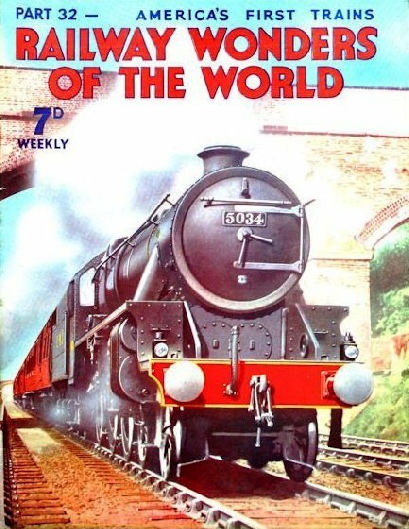
The State Lines of Latvia (Part 2)
Concluding the account of the Latvian State Railways from part 31.
(Page 997)
Germany’s Wonder Stations
A MODERN NOTE is struck by the upper of these photographs, which shows a side view of the new harbour station at Friedrichshafen. This station, which was opened on March 7, 1933, lies on the shore of Lake Constance. The waiting-room on the first floor is provided with a balcony from which there is a fine view over the lake. The lower illustration, which shows the Central Station at Stuttgart, was taken on Christmas Eve. On the tower is an illuminated Christmas tree.
(Page 1011)
Industrial Railways
Important private lines in Great Britain. Some of the most remarkable railway lines in Great Britain are little known. No passengers pass over them and the lines and rolling-stock are so situated that the public sees very little of them. Yet some of these railways, owned by collieries, ironworks, gas companies, quarry companies, and all kinds of industrial organizations, are of great importance.
A sequel to this article appears in part 47.
(Pages 1015-1022 )
A Special Train for the Governor of Nyasaland
A SPECIAL TRAIN for the Governor of Nyasaland. The railways under his jurisdiction have 273 miles of 3 ft 6 in gauge track.
(Page 998)
Russia and Siberia
A century of progress in rail transport. The 6 ft gauge St. Petersburg-Pavlovsk line was opened in 1837, the early locomotives came from Great Britain, and were supplied by Stephenson and Hackworth. But until recently railway progress has been comparatively slow in that vast country, where journeys are thought of in days rather than in hours. The total mileage under the People’s Commissariat of Transport is about 72,000. The present system has been separated into twenty-two divisions, and there has been a considerable amount of electrification. But the Russian railways have, in comparison with the lines of other countries, a prospect of almost limitless expansion. This is another chapter complements the one on The Trans-Siberian Express which appeared in parts 14-15.
(pages 1004-1010 )
Contents of Part 32
The State Lines of Latvia (Part 2)
Pioneering in Nyasaland
Russia and Siberia
Germany’s Wonder Stations (photogravure supplement)
Industrial Railways
America’s First Trains
Diesel Shunting Locomotives (Part 1)
Reconstruction of Bridges in Latvia
RECONSTRUCTION has been the main feature of the Latvian system. The top picture shows a wrecked railway bridge in 1919 across the Lielupe near Riga. There were many such scenes in Latvia after the Great War. The lower photograph shows the rebuilt bridge that carries the main line between Riga and Ventspils.
(Page 997)
Pioneering in Nyasaland
An important link with the East African Coast. Few systems are more interesting than that which connects Lake Nyasa with the important port of Beira in Portuguese East Africa, the Nyasaland Railways are included in this system. The pioneers of the railway in this territory had to contend not only with hills, rivers, and floods, but also with intense heat, insects, fever, and the difficulties attendant of the use of unskilled native labour. This is the twelfth article in the series Railways of the Empire.
(Pages 998-1003 )
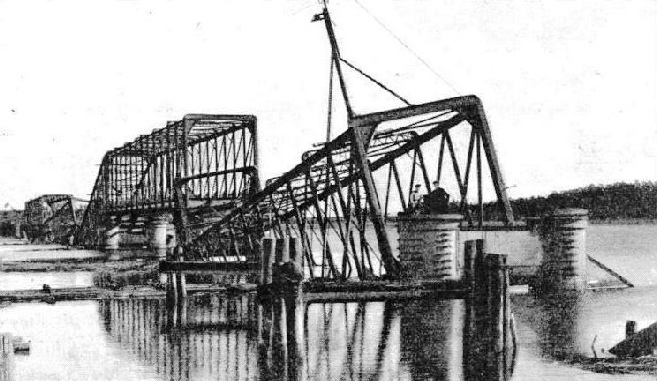
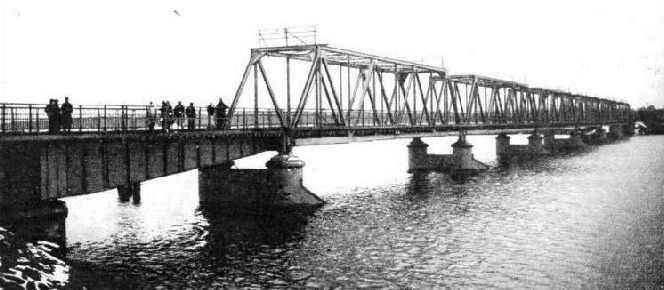
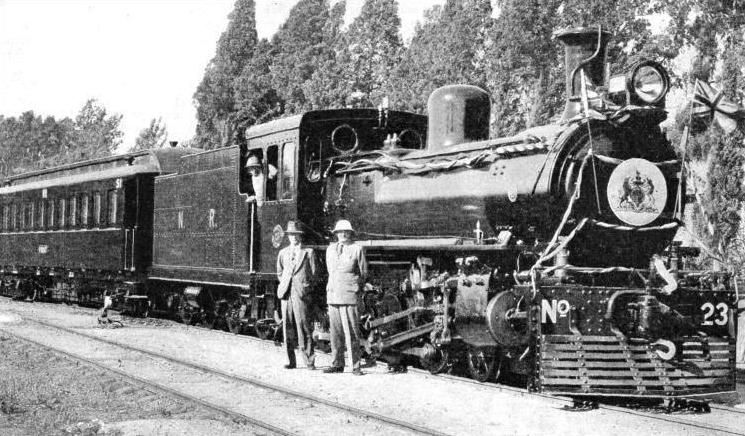
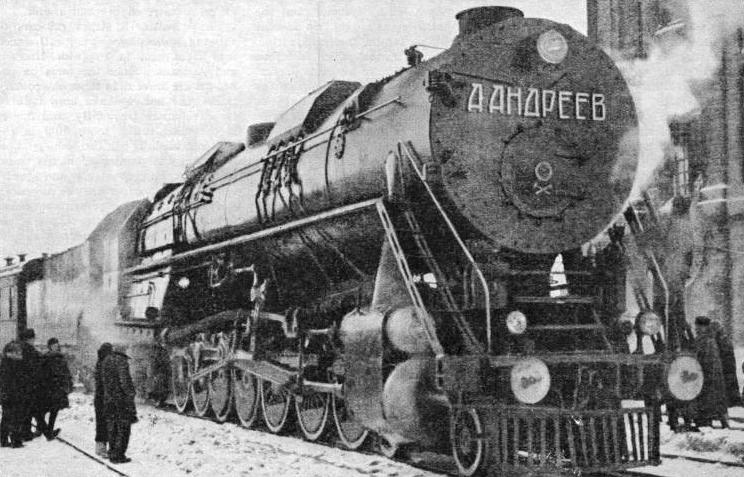
Europe’s Most Powerful Goods Engine
EUROPE'S MOST POWERFUL GOODS ENGINE. This is the claim made for the large freight engine, seen here on its arrival in Moscow in January, 1935. It was designed for hauling coal trains of 3,000 tons from the Donetz mines to Moscow.”
(Page 1004)
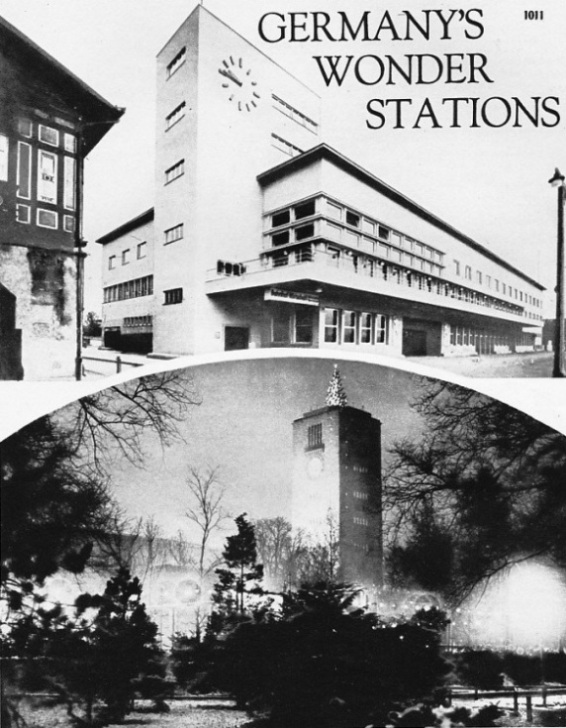
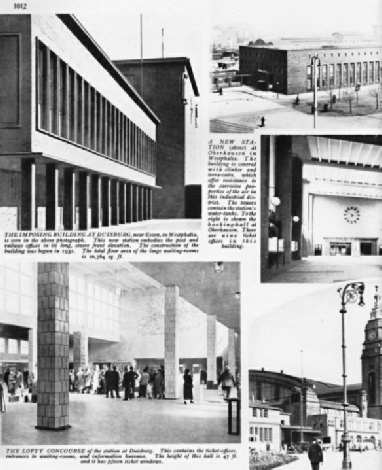
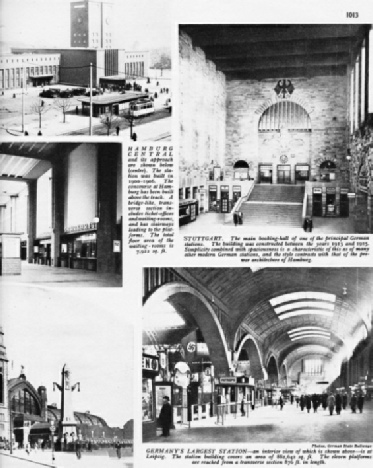
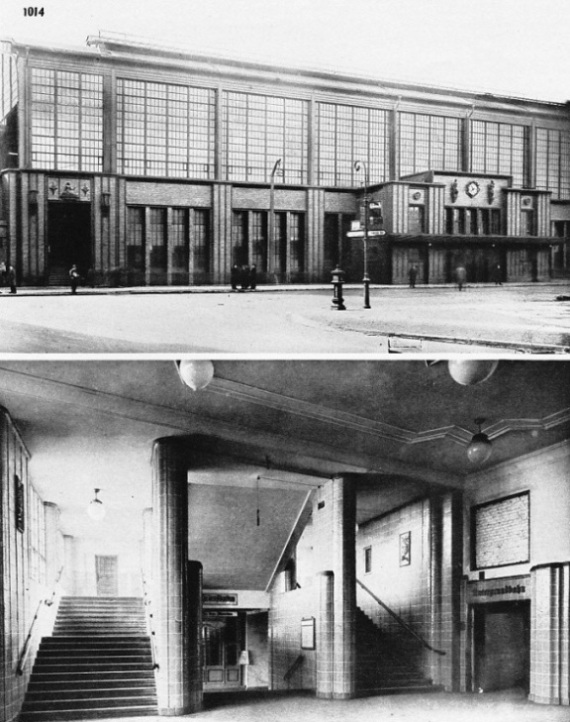
Germany’s Wonder Stations - 3
FRIEDRICHSTRASSE STATION, a large through station in the heart of Berlin. The line continues to the Schlesicher Bahnhof, which is the terminus of the lines coming from the east. The track at Friedrichstrasse is elevated and the waiting-rooms and offices are situated beneath the platforms. The station was reconstructed in the years 1919-1925. The upper photograph gives a view of the north front, while that below shows a sections of the lower part of the building.
(Page 1014)
America’s First Trains
The railways of America are among the best in the world. They are famous for their speed, their efficiency, and their comfort. But they have not been perfected without struggle and experiment. The evolution of the railway in America provides a most fascinating story. The modern characteristics are the logical outcome of this struggle and experiment. They represent over a century of development since the completion of a Portage Railroad across the Allegheny Mountains, on the journey between Philadelphia and Pittsburg, when boats were hauled overland on trucks by cable and stationary engine. This chapter gives a graphic impression of the early railways in America at the time when Charles Dickens travelled there.
(Pages 1023-1026 )
Click on the small image t o see a short British Pathe newsreel clip of the “Centenary of the American Railroad” (1927). This was celebrated with a cavalcade of old-
o see a short British Pathe newsreel clip of the “Centenary of the American Railroad” (1927). This was celebrated with a cavalcade of old-time engines to the latest electric locomotive.
Germany’s Wonder Stations - 2
(Top left) THE IMPOSING BUILDING AT DUISBURG, near Essen, in Westphalia. This new station embodies the post and railway offices in its long, severe front elevation. The construction of the building was begun in 1932. The total floor area of the large waiting-rooms is 10,764 sq ft.”
(Top centre) “A NEW STATION at Oberhausen in Westphalia. The building is covered with clinker and terra-cotta, which offer resistance to the corrosive properties of the air in this industrial district. The towers contain the station’s water-tanks.
(Centre) The booking-hall at Oberhausen. There are nine ticket offices in this building.
(Top right) STUTTGART. The main booking-hall of one of the principal German stations. The building was constructed between the years 1913 and 1925. Simplicity combined with spaciousness is a characteristic of this as of many other modern German stations, and the style contrasts with that of the pre-war architecture of Hamburg.
(Bottom left) THE LOFTY CONCOURSE of the station at Duisburg. This contains the ticket-offices, entrances to waiting-rooms, and information bureaux. The height of this hall is 47 ft, and it has fifteen ticket windows.
(Bottom centre) HAMBURG CENTRAL and its approach. The station was built in 1900-1906. The concourse at Hamburg has been built above the track. A bridge-like transverse section includes ticket-offices and waiting-rooms, and has stairways leading to the platforms. The total floor area of the waiting-rooms is 7,922 sq ft.
(Bottom right) GERMANY’S LARGEST STATION is at Leipzig. The station building covers an area of 882,642 sq ft. The eleven platforms are reached from a transverse section 876 ft in length. An exterior view of Leipzig station appears in part 26.
(Pages 1012-1013 )
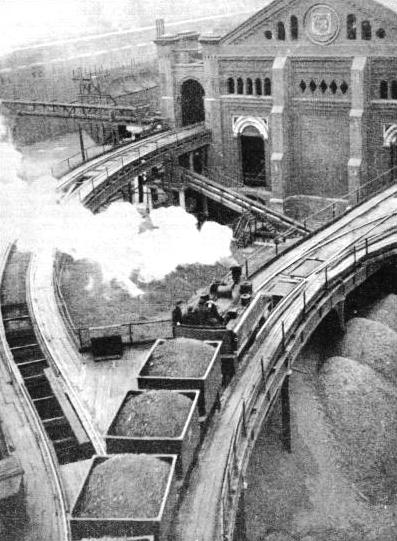
The Gas Light and Coke Company’s System at Beckton
THE "DOUBLE DECKED RAILWAY" at Beckton is often so called because of long viaducts which run above the surface tracks. There are some seven miles of viaduct in the works and altogether over seventy miles of line have been laid within 360 acres. This private system is linked up with the LNER.
(Page 1023)
Baltimore & Ohio “Atlantic” Locomotive
THE "ATLANTIC" locomotive, which was built at York, Pennsylvania, in 1832, by Phineas Davis. Ox teams were used to convey the engine to Baltimore. It made a successful first trip between Baltimore and Ellicott's Mills (Maryland), a distance of thirteen miles. The "Atlantic" was in service for sixty years, and is still capable of running under its own steam.
(Page 1023)
Diesel Shunting Locomotives (Part 1)
Economical traction for special services. The Diesel-engine type has definite points of superiority over the petrol-engine locomotive. It is only during the past three or four years, however, that the Diesel locomotive has made any substantial commercial progress, and some of these locomotives are described in this chapter. The article concludes in part 33.
(Pages 1027-1028 )

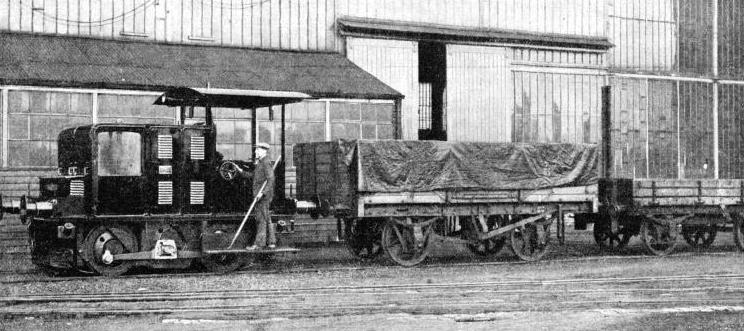
A 15-ton Diesel Locomotive
A 15-